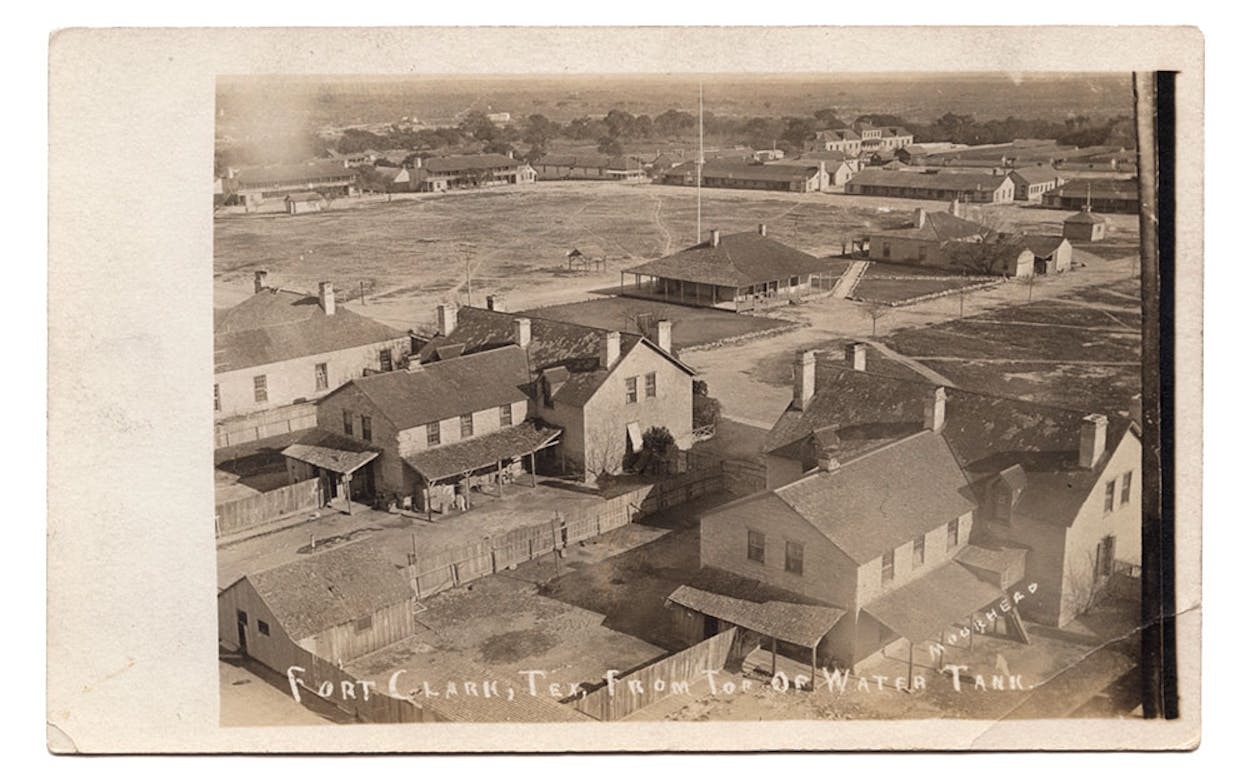The original owner of the property that became Fort Clark was a fellow by the name of Samuel Maverick. You might have heard of him—he’s one of the most famous historical Texans, as the namesake of the word “maverick” for his unbranded cattle. He leased the land, out in what’s now called Brackettville (about 30 miles east of Del Rio), to the United States government back in 1852. Originally, the property was known as Fort Riley, after General Bennet C. Riley—but Riley, a humble man whose decision to step down from his role as military governor of California was instrumental in settling the issue of California’s statehood, insisted that the base be named for an officer who died during the Mexican-American War, so it became Fort Clark, named for John B. Clark.
The fort housed Union soldiers during the Civil War until it was taken by the Confederacy. It was taken back before the end of the war, and reoccupied by U.S. soldiers during the Indian Wars of the late nineteenth century. Mary Maverick (Samuel’s widow) raised the rent on the government around that time, doubling it from $600 to $1,200 a year, before selling it outright for $80,000. It remained in use until World War II. General Patton served there, as did General Jonathan M. Wainwright. After the war, the cavalry branch of the U.S. Army was merged with the armor branch, and the base was sold to the Texas Railway Equipment Company of Houston in 1946. For the next few decades, it was a dude ranch, before becoming a retirement community.
If you’re looking to buy a residence with such a storied legacy, you’re in luck—one unit of the officers’ quarters, which is on the National Historic Register, is for sale for just under $200,000.
While some aspects of the 2,968-square-foot, circa-1874 quarters reflect its military origins—the eighteen-inch rock walls are probably more secure than what you’ll find on most residential real estate listings, and the original oak floors sound pretty sturdy—it’s mostly just a border getaway spot. The less historic features in the area include a “mega-pool” (the third largest in Texas) and a golf course. For whoever buys the property, that ought to make for a decent respite from rewatching The Adventures of Pecos Bill (whose real-life namesake was also stationed at Fort Clark) and reading biographies of Patton.
There are plenty of unique properties that come up for sale in Texas, including George Strait’s house, Selena Gomez’s home, and the property outside of Austin including a replica of Shakespeare’s Globe Theatre on it. Fort Clark might not compete with them in terms of extravagance, but it’ll be a while before “Selena Gomez slept here” competes with the storied legacies of William Rufus “Pecos Bill” Shafter (the real one, not the one who lassoed a twister) and General Patton.








